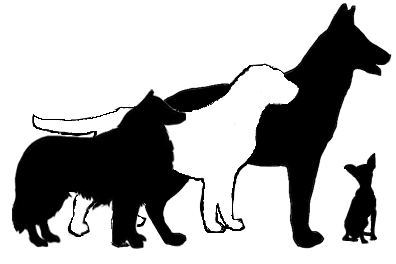How Do I Get My Dog to Respect Me?
- Paw Pack Dog Training
- Jul 17, 2020
- 3 min read

The Oxford definition of respect is: “A feeling of deep admiration for someone or something elicited by their abilities, qualities, or achievements.”
Can I get your dog to have feelings of deep admiration for you that are elicited by your abilities, qualities, or achievements?
My answer is unequivocally, no. I cannot get your dog to have deep feelings of admiration for you.
Likely what you are really asking is how do I get my dog to do “ABC” regardless of the environment.
How do I get my dog to come when called, even if the neighbor’s dog is barking at the fence?
How do I get my dog to walk politely on a leash? How do I get my dog to sit when I ask him to?
We can answer these questions and many more like them because the answers have nothing to do with deep feelings of admiration. Instead, they have to do with rules and the use of reinforcements. More specifically, the answers have to do with clear and consistent rules and clear and consistent use of reinforcement.
Rules are not meant to threaten our dogs into compliance. They are opportunities for dogs to earn positive reinforcement. For example, the rules of fetch may include that the dog needs to have four paws on the ground before the ball is tossed. The reinforcement for having four paws on the ground is the opportunity to chase after the ball. Or maybe there’s a rule that allows the dog to jump out of the car when he hears a specific verbal cue. Rules are a way to clearly communicate with our dogs what we want and how they can get what they want. It's a win-win for the humans and the dogs.
One of the rules in my house is that if a dog wants something (be that food, toys, or to go outside, etc.), he has to sit. I don’t ask for a sit. I set up the environment such that I have what he wants (ex: to go outside). He stands at the door and we wait… perhaps he jumps, spins, paws... performs all sorts of gyrations to get me to open the door. The very second that his butt hits the floor in a sit, I open the door. By consistently waiting for that sit and immediately reinforcing it the moment it happens, the dog learns the rule of sitting for what he wants. Not long after, I add the verbal cue “sit” and now I have a dog who sits on a verbal cue too.
I am patient, calm, and consistent in my application of the rule. If he doesn’t sit, he doesn’t get it. I don’t yell, I don’t use weird sounds, I don’t stomp my feet, and I don’t push him into a sit. I simply wait. I consistently reinforce his sit by giving him what he wants immediately.
I have a clear rule (Sit for what you want).
I consistently apply it (No sit, no reinforcement).
I consistently reinforce it (Each sit earns the dog something he wants).
Does this mean my dog respects me? No, I don’t think so. I think it means my dog understands the rule and knows that when he sits, he will be reinforced for that sit.
What about the dog who doesn’t come when called? Isn’t that a sign of disrespect? No, it’s a sign that the dog doesn’t know the rule and how the rule provides him the opportunity to earn reinforcement. He doesn’t know that if he follows the rule of coming when called, he will get reinforced for it.
Rules and the use of positive reinforcement create opportunities for dogs to perform the behaviors that we want, knowing they will earn reinforcement.
The bottom-line is that it isn’t a lack of respect that gets us into trouble; it’s a lack of clear, consistent rules and the lack of reinforcement.




Commentaires